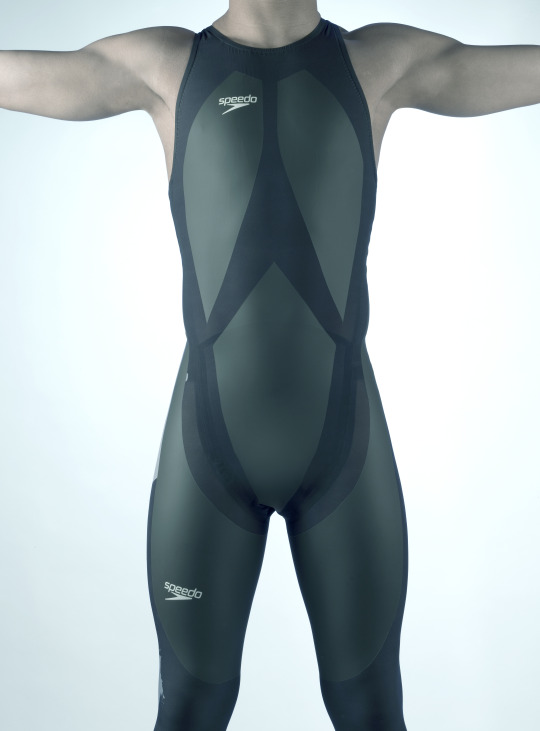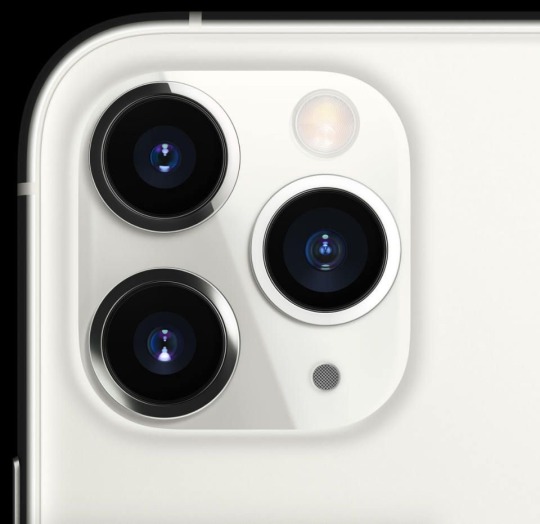Text
Athletes Go for the Gold with NASA Spinoffs
NASA technology tends to find its way into the sporting world more often than you’d expect. Fitness is important to the space program because astronauts must undergo the extreme g-forces of getting into space and endure the long-term effects of weightlessness on the human body. The agency’s engineering expertise also means that items like shoes and swimsuits can be improved with NASA know-how.
As the 2024 Olympics are in full swing in Paris, here are some of the many NASA-derived technologies that have helped competitive athletes train for the games and made sure they’re properly equipped to win.

The LZR Racer reduces skin friction drag by covering more skin than traditional swimsuits. Multiple pieces of the water-resistant and extremely lightweight LZR Pulse fabric connect at ultrasonically welded seams and incorporate extremely low-profile zippers to keep viscous drag to a minimum.
Swimsuits That Don’t Drag
When the swimsuit manufacturer Speedo wanted its LZR Racer suit to have as little drag as possible, the company turned to the experts at Langley Research Center to test its materials and design. The end result was that the new suit reduced drag by 24 percent compared to the prior generation of Speedo racing suit and broke 13 world records in 2008. While the original LZR Racer is no longer used in competition due to the advantage it gave wearers, its legacy lives on in derivatives still produced to this day.

Trilion Quality Systems worked with NASA’s Glenn Research Center to adapt existing stereo photogrammetry software to work with high-speed cameras. Now the company sells the package widely, and it is used to analyze stress and strain in everything from knee implants to running shoes and more.
High-Speed Cameras for High-Speed Shoes
After space shuttle Columbia, investigators needed to see how materials reacted during recreation tests with high-speed cameras, which involved working with industry to create a system that could analyze footage filmed at 30,000 frames per second. Engineers at Adidas used this system to analyze the behavior of Olympic marathoners' feet as they hit the ground and adjusted the design of the company’s high-performance footwear based on these observations.

Martial artist Barry French holds an Impax Body Shield while former European middle-weight kickboxing champion Daryl Tyler delivers an explosive jump side kick; the force of the impact is registered precisely and shown on the display panel of the electronic box French is wearing on his belt.
One-Thousandth-of-an-Inch Punch
In the 1980s, Olympic martial artists needed a way to measure the impact of their strikes to improve training for competition. Impulse Technology reached out to Glenn Research Center to create the Impax sensor, an ultra-thin film sensor which creates a small amount of voltage when struck. The more force applied, the more voltage it generates, enabling a computerized display to show how powerful a punch or kick was.

Astronaut Sunita Williams poses while using the Interim Resistive Exercise Device on the ISS. The cylinders at the base of each side house the SpiraFlex FlexPacks that inventor Paul Francis honed under NASA contracts. They would go on to power the Bowflex Revolution and other commercial exercise equipment.
Weight Training Without the Weight
Astronauts spending long periods of time in space needed a way to maintain muscle mass without the effect of gravity, but lifting free weights doesn’t work when you’re practically weightless. An exercise machine that uses elastic resistance to provide the same benefits as weightlifting went to the space station in the year 2000. That resistance technology was commercialized into the Bowflex Revolution home exercise equipment shortly afterwards.
Want to learn more about technologies made for space and used on Earth? Check out NASA Spinoff to find products and services that wouldn’t exist without space exploration.
Make sure to follow us on Tumblr for your regular dose of space!
2K notes
·
View notes
Text
3 NASA Technologies Impacting Society and Our Way of Life 🚀
By: Science 10 Class (Group 14) - Alvarez, Dacanay, Dy, Gumatin, Sindac

Truly, NASA has always provided insight to what is yet to be known in the big wide universe. They have done this through the use of multiple tools, primarily the technologies they have invented. However, who would have known, these technologies used on their space missions are entirely beneficial in everyday life on earth. It’s fascinating how something so big and used for big projects and discoveries, are used simply in our everyday lives and bring us convenience in our chaotic lives. Thus, in this blog post, I will be discussing 3 NASA technologies impacting society and our way of life. 🪐
Communications and Phone Technologies 📱
In the 1990s, NASA built a new sensor using a complementary metal oxide semiconductor (CMOS). This is what was used to take photos in space during space missions as it is a small, highly efficient, and low-power-requiring tool. Thus, it was relatively convenient for these space missions. Consequently, with the rising digital times and the need for convenience as a human species, this CMOS technology is widely present in our digital imaging industries (Dunbar, 2019). Moreover, NASA has helped come up with portable Wi-Fi signal boosters. These were originally made to improve communication during lunar missions. However, at present, the technology is used to help increase incoming signals and improve local reception for cell phones, laptops, satellites, and Wi-Fi internet receivers without the need for power plugs, cables, or batteries. Both of these technologies have impacted society enormously (Richmond, 2024). Evidently, this has enabled the application of cameras, high-definition videos, and social media to a smaller, more compact cell phone where multiple functions are condensed. This has impacted us by making capturing and sharing photos easier, allowing for more efficient dissemination of visual information. Similarly, the invention of the Wi-Fi booster has enabled faster and more efficient communication when using Wi-Fi, allowing for better communication with others.


Home Purifiers 🧼
Air purifiers were initially designed by NASA to eliminate various toxins present in the air in order to make plants grow efficiently in space. NASA's success in the newly developed technology influenced its modification into plug-in filters to keep the indoor air cleaner and healthier (Dunbar, B., 2019). This breakthrough has opened opportunities for further innovative developments of the different air purifier purification technologies to cater to rising issues affecting public health. The existing air purification technologies are high-efficiency particulate air filters that have mineralization technology of ultra-light structure, negative (positive) ion technology, photocatalyst technology, electrostatic dust collection technology, and activated carbon adsorption technology (Wang, et al. 2015). These different technologies are utilized in various ways. During the COVID pandemic, air purifiers were used in hospitals, schools, and various establishments (NatéoSanté, 2023). In a study conducted by Zhai, et al. (2021), portable air purifiers were found to be effective in mitigating virus-carrying droplets in enclosed places. A similar research by Fermo, et al. (2021) found air purifiers to be efficient in reducing concentrations of fine Particulate Matter (PM) and Volatile Organic Compounds (VOCs) present in indoor air. The filtering of these air pollutants has impacted society and the current way of living by providing means to consistently monitor and maintain indoor air quality. This consequently minimizes and/or prevents possible illnesses or diseases.

Sustainability 🪴
Solar cells found in solar panels are one of the innovations developed by NASA to power unmanned aircraft flights. This technology was successfully launched in 1995 through the Pathfinder, the first remote-operated solar-powered aircraft to reach an altitude of 50,500 feet. Developed by the Environmental Research Aircraft and Sensor Technology (ERAST) Alliance, this invention was created to apply solar technology to power the aircraft’s electronic systems, allowing it to endure long durations and high-altitude flights for science missions (NASA Spinoff, 2005). This was followed by other prototypes including the Pathfinder-Plus, Helios, and Centurion, each of which were developed to surpass the altitude of its predecessor with the hopes of remaining airborne for weeks (National Aeronautics and Space Administration, 2014). This invention involves the creation of single-crystal silicon solar power cells which are efficient, lightweight, and cost-effective. As the world continues to face the issue of global warming, such technologies become increasingly important to integrate into daily living. As such, it impacts society by contributing to our sustainability efforts to renewable and reusable energy rather than relying on unrenewable energy sources. Moreover, it provides numerous communities with a more cost-efficient option and uses this to power their house and everyday needs (Richmond, 2024).

These are some of the few technologies that NASA has created and that we now use in our everyday lives. Many more were not listed here but are important in their own right or be the trailblazer of technology in the future. You may read more about them in the references below.
References:
Dunbar, B. (2019). NASA: 60 Years & Counting - Technology. NASA. https://www.nasa.gov/specials/60counting/tech.html
Richmond, S. (2024, August 12). Council Post: Reaching For The Stars: Three Ways NASA Breakthroughs Impact Technology Today. Forbes. https://www.forbes.com/councils/forbestechcouncil/2022/01/07/reaching-for-the-stars-three-ways-nasa-breakthroughs-impact-technology-today/
Dunbar, B. (2019). NASA: 60 Years & Counting - Technology. NASA. https://www.nasa.gov/specials/60counting/tech.html
Fermo, P., Artíñano, B., De Gennaro, G., Pantaleo, A. M., Parente, A., Battaglia, F., Colicino, E., Di Tanna, G., Da Silva, A. G., Junior, Pereira, I. G., Garcia, G. S., Goncalves, L. M. G., Comite, V., & Miani, A. (2021). Improving indoor air quality through an air purifier able to reduce aerosol particulate matter (PM) and volatile organic compounds (VOCs): Experimental results. Environmental Research, 197, 111131. https://doi.org/10.1016/j.envres.2021.111131
NASA Spinoff. (2005). Harnessing the Power of the Sun. https://spinoff.nasa.gov/Spinoff2005/er_3.html
NatéoSanté. (2023, November 4). What is an air purifier? What effect does it have on indoor air quality, viruses and Covid-19, health? Retrieved September 8, 2024, from https://www.nateosante.com/en/thematic-files/what-is-an-air-purifier-what-effect-does-it-have-on-indoor-air-quality-viruses-and-covid-19-health/
National Aeronautics and Space Administration (2014, February 28). Centurion Remotely Piloted Solar-Powered Airplane. https://www.nasa.gov/reference/centurion/
Richmond, S. (2024, August 12). Council Post: Reaching For The Stars: Three Ways NASA Breakthroughs Impact Technology Today. Forbes. https://www.forbes.com/councils/forbestechcouncil/2022/01/07/reaching-for-the-stars-three-ways-nasa-breakthroughs-impact-technology-today/
Wang, Y. H., Wang, H., Zhao, C. Z., & Zhang, Y. (2015). Research Progress of Air Purifier Principles and Material Technologies. Advanced Materials Research, 1092–1093, 1025–1028. https://doi.org/10.4028/www.scientific.net/amr.1092-1093.1025
Zhai, Z., Li, H., Bahl, R., & Trace, K. (2021). Application of portable air purifiers for mitigating COVID-19 in large public spaces. Buildings, 11(8), 329. https://doi.org/10.3390/buildings11080329

0 notes